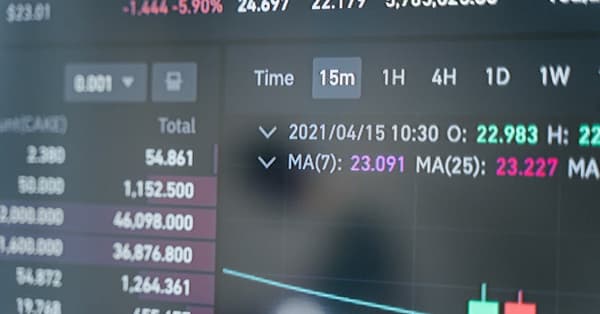How the U.S. National Debt Impacts Your Crypto Trading
The U.S. national debt has hit $38 trillion. Discover how this affects your Bitcoin and meme coin trades in today's volatile market.
The U.S. national debt has recently surged beyond $38 trillion, raising concerns across financial markets. This monumental figure highlights not just the fiscal challenges facing the nation but also casts a long shadow over the cryptocurrency landscape.
For you as a crypto trader—especially if you're involved with Bitcoin or meme coins—understanding the implications of this debt is crucial. There’s a tangible link between national debt levels and the performance of the cryptocurrency market, impacting everything from inflation rates to investor sentiment.
In this article, we'll explore the dynamics of U.S. debt and its correlation with Bitcoin, delve into the rising wave of meme coins, and provide you with actionable trading strategies tailored for these volatile assets.

🎯 KEY INSIGHT
As of November 2023, the U.S. national debt stands at $38.118 trillion, which is roughly equivalent to about 368 million Bitcoin at the current BTC value. This connection underscores how fiscal policies can influence cryptocurrency valuations.

The U.S. national debt represents the total amount of money the federal government owes to its creditors. It includes both public debt and intragovernmental holdings. As of November 2023, that total is an eye-popping $38.118 trillion.
The growth of U.S. debt has deep roots, stretching back over a century and influenced by various economic events. Major spikes occurred during the Great Depression, World War II, and the 2008 financial crisis, all contributing to a ballooning debt burden.

High national debt can lead to inflation, which in turn depreciates the value of the currency. Under these economic conditions, many investors turn to cryptocurrencies as a hedge against inflation, impacting overall market sentiment and prices. If you're keen to learn more, [link: inflation and crypto] might be worth checking out.
Bitcoin operates within a limited supply framework, capped at 21 million coins. Upcoming halving events will reduce the rate of new Bitcoin production, significantly influencing both supply and price dynamics.

The staggering U.S. debt of $38.118 trillion translates to about 368 million BTC, illustrating how macroeconomic factors can pivotally impact Bitcoin's valuation and your investment behavior.
Historical data shows that significant increases in national debt often lead to price surges in Bitcoin. For instance, during the debt ceiling crisis in mid-2021, we saw remarkable price movements that caught many traders by surprise. If you want to dive deeper into market reactions, [link: market trends and Bitcoin] could be illuminating.
Tags:
Ready to Make Profitable Crypto Calls?
Check out our proven track record on the leaderboard
View Leaderboard →Related Posts
Meme Coins: The Surprising Surge in Crypto Markets
Discover how meme coins like BONK and PEPE are reshaping the crypto landscape, especially in Asia's booming market. Time to explore the trends!
Navigating Bitcoin's Dip: What Traders Should Know
Bitcoin's drop below $100k has traders on edge. Discover how to interpret market signals and leverage the latest trends in your crypto portfolio.
How U.S. Debt Impacts Cryptocurrency and Meme Coins
Explore how the soaring U.S. national debt affects the crypto market, particularly meme coins, and what it means for your investments.
Why Meme Coins Are Shaping the Future of Crypto
Discover how Dogecoin and Shiba Inu are transforming the crypto landscape and what this means for you as an investor in digital assets.
Navigating Crypto's Wild Waves: Bitcoin & Meme Coins Insights
Dive into the current Bitcoin trends and the rise of meme coins. Get insights on price triggers and strategies for thriving in this volatile market.
Why XRP is More Than Just a Meme Coin: A Deep Dive
Curious about XRP's role in today's crypto scene? Discover its utility beyond memes and how it fits into the DeFi landscape in our latest blog post.